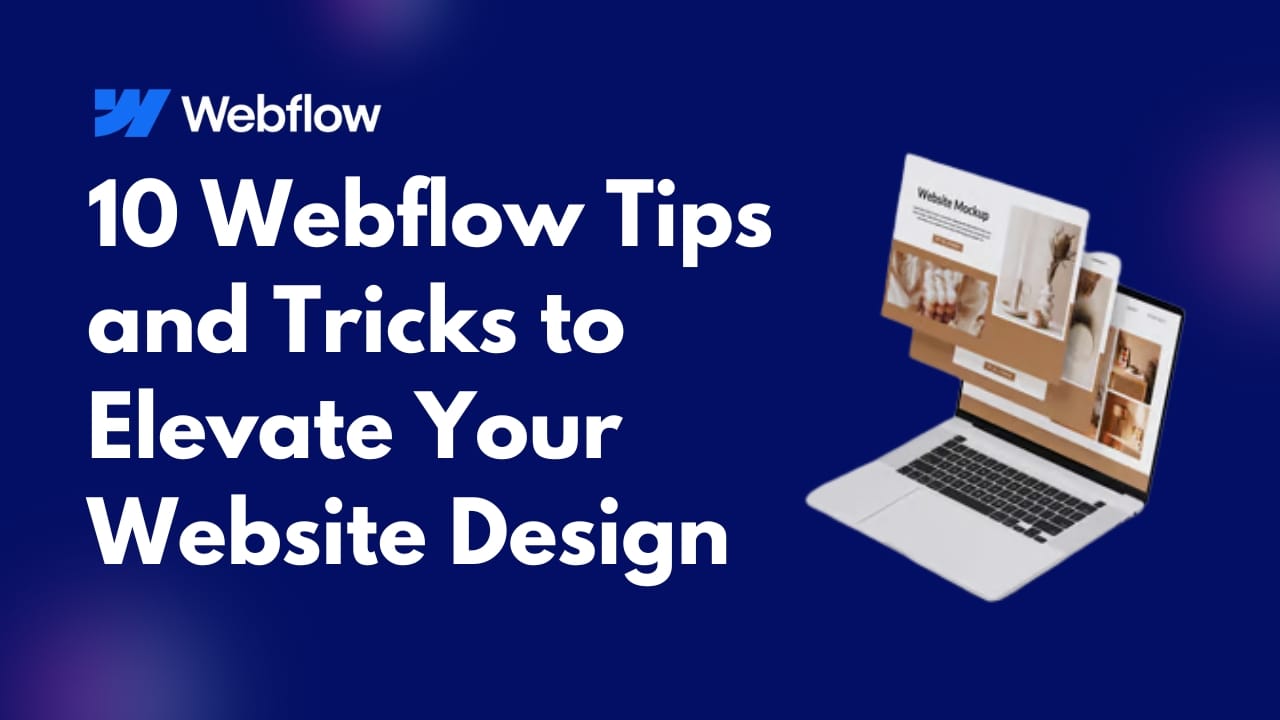Webflow is a powerhouse when it comes to web design, offering unmatched flexibility and creative control. Whether you’re a seasoned designer or just getting started, mastering a few key techniques can take your Webflow projects to the next level. In this guide, we’ll explore 10 game-changing Webflow tips and tricks to help you design a website that’s both visually stunning and highly functional.
1. Utilize Global Colors for Easy Brand Consistency
Setting up global colors in Webflow saves time and keeps your design cohesive. Instead of manually updating each element, global colors allow you to make site-wide changes with just a few clicks. To set a global color, simply add a new swatch in the color picker and apply it across your project.
2. Take Advantage of Webflow’s CMS Collections
If you’re building a dynamic website—think blogs, portfolios, or product listings—Webflow’s CMS (Content Management System) is your best friend. Create CMS Collections to store and manage content effortlessly. The best part? You can design templates that automatically pull data from the CMS, making updates seamless.
3. Master Flexbox and Grid for Ultimate Layout Control
Webflow gives you access to both Flexbox and CSS Grid, two powerful layout systems. Flexbox is perfect for aligning elements horizontally or vertically, while Grid is ideal for more complex, structured layouts. Knowing when to use each one will make designing responsive and visually appealing pages a breeze.
4. Use Custom Interactions for a Unique User Experience
Want to make your website stand out? Webflow’s interaction tools allow you to create animations without writing a single line of code. From smooth hover effects to scroll-based animations, interactions can add a polished and professional touch to your website.
5. Optimize for Performance with Lazy Loading
Speed matters. A slow website can frustrate visitors and negatively impact your SEO. Webflow offers lazy loading, which ensures images and videos only load when they come into view. This reduces initial load time and improves your website’s overall performance.
6. Set Up Reusable Components with Symbols
If you have recurring elements like headers, footers, or call-to-action sections, Webflow’s Symbols feature is a lifesaver. Convert elements into symbols so that when you make changes in one place, they update across the entire site. This keeps your workflow efficient and your design consistent.
7. Implement SEO Best Practices from the Start
Webflow makes it easy to optimize your site for search engines. Be sure to:
- Use proper heading structures (H1, H2, H3, etc.)
- Add alt text to images for accessibility and SEO
- Customize meta titles and descriptions for each page
- Enable Webflow’s automatic sitemap generation for better indexing
8. Leverage Webflow’s E-commerce Features
If you’re planning to sell products, Webflow’s e-commerce tools make it simple to create an elegant online store. Customize your product pages, set up secure payment gateways, and even integrate with third-party tools for an optimized shopping experience.
9. Optimize for Mobile Responsiveness
A website that looks amazing on desktop but clunky on mobile is a missed opportunity. Webflow’s responsive design tools let you tweak your layout for different screen sizes. Always preview your site in tablet and mobile views to ensure a seamless user experience.
10. Explore Webflow’s Community and Resources
Webflow’s community is one of its greatest assets. Whether you need troubleshooting help or creative inspiration, the Webflow Forum, Webflow University, and countless YouTube tutorials offer valuable insights. Staying engaged with the community will help you continually refine your design skills.
Final Thoughts
Webflow is an incredible platform that allows you to push the boundaries of web design. By implementing these tips and tricks, you’ll not only enhance your workflow but also create more engaging, high-performing websites. So, experiment, refine, and take your Webflow designs to the next level!




